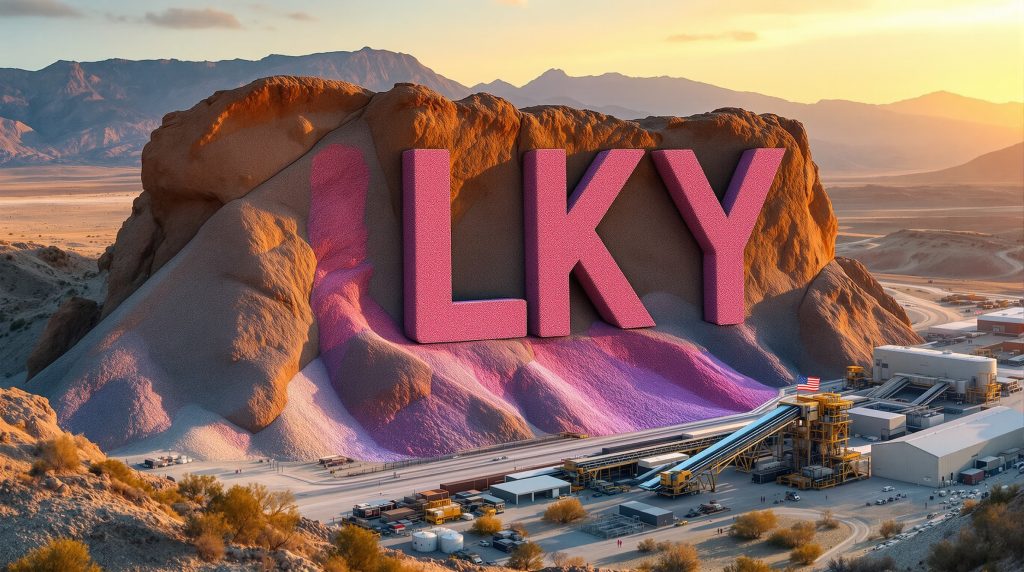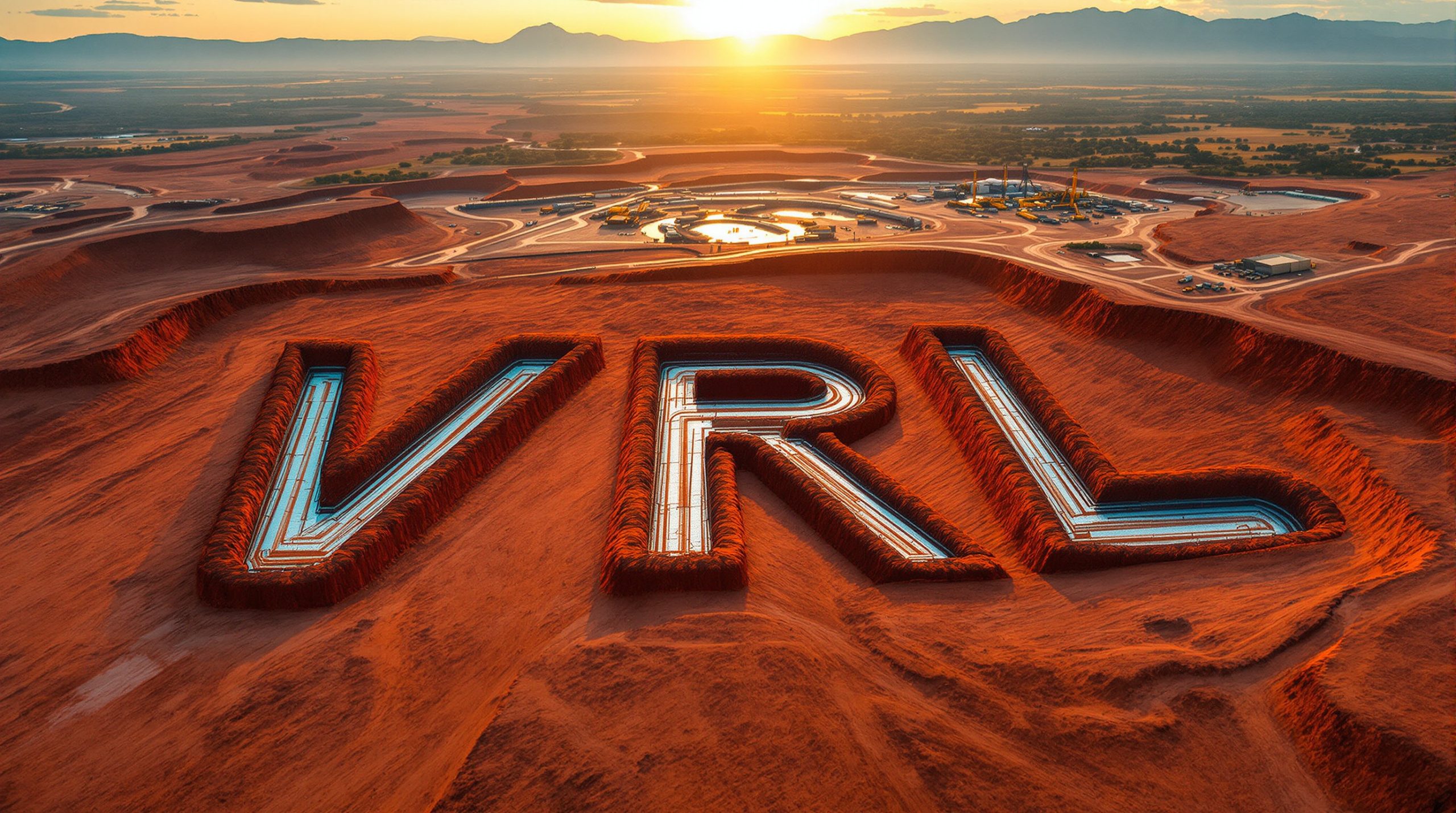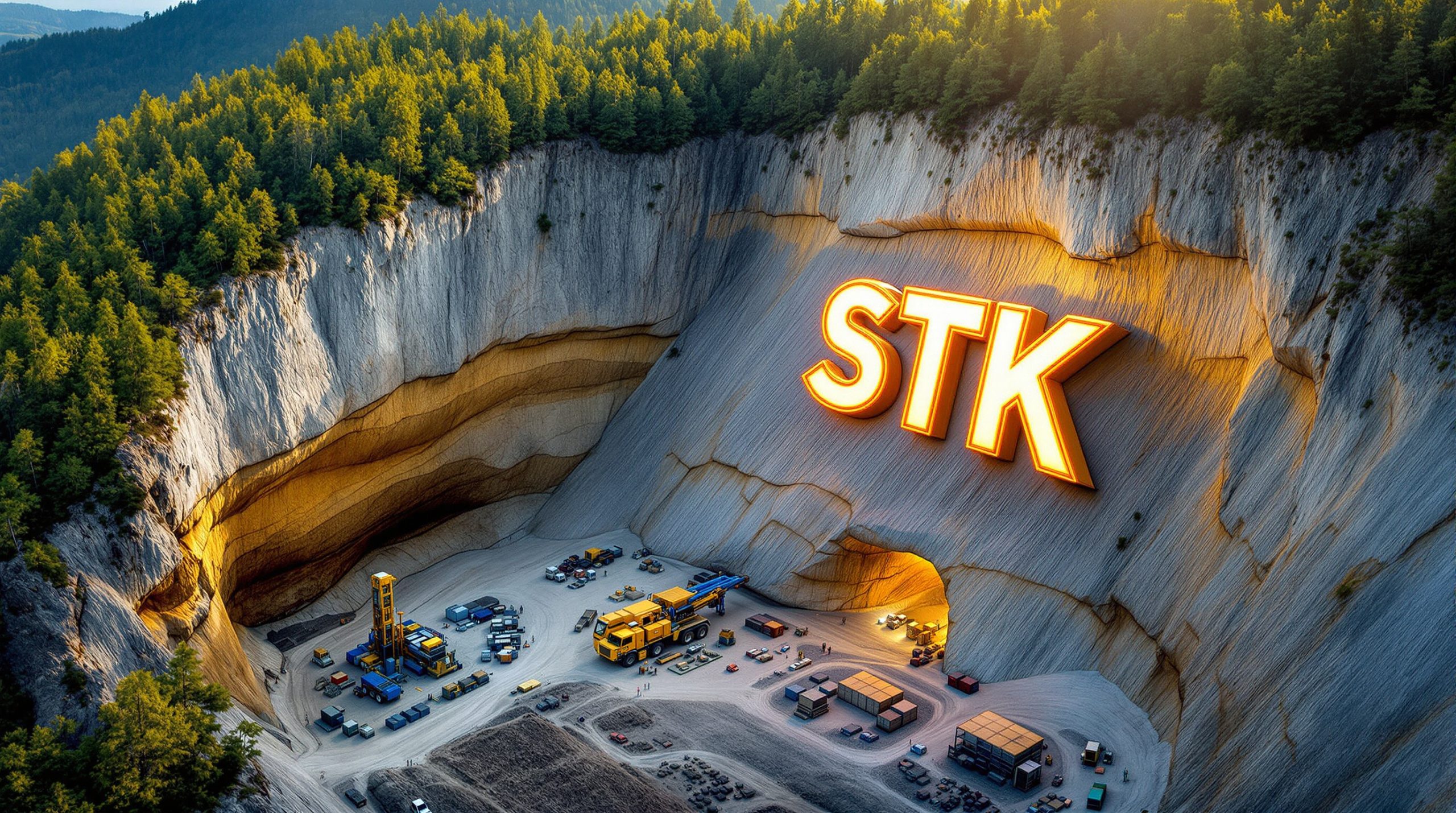American Market Expansion Signals Growth Strategy for Rare Earths Player
Locksley Resources Limited (ASX: LKY; OTCQX: LKYRF) has successfully upgraded its U.S. trading status to the prestigious OTCQX® Best Market from the OTCQB® Venture Market, significantly enhancing its visibility to American investors. The company's strategic move comes at a pivotal moment as global competition for critical minerals intensifies, particularly for rare earth elements and antimony.
The qualification represents a rapid progression for Locksley, achieving OTCQX status in just over three months since its initial U.S. listing – a development that aligns perfectly with the company's American-focused critical minerals strategy.
Nathan Lude, Head of Strategy, Capital Markets & Commercialisation, highlighted the significance:
"Graduating to the OTCQX Market in record time since our initial listing just over three months ago, is a significant milestone for Locksley as we broaden our visibility and accessibility to U.S. investors."
Strategic Position in America's Critical Minerals Landscape
Locksley's flagship Mojave Project sits in an enviable position in California, directly adjacent to MP Materials' Mountain Pass Mine – one of the Western world's most significant rare earth operations. This prime location underscores the geological potential of Locksley's holdings, which span over 491 claims across contiguous prospect areas including the North Block/Northeast Block and the El Campo Prospect.
What distinguishes Locksley in the competitive critical minerals space is its dual-commodity approach targeting both rare earth elements (REEs) and antimony through a fully integrated mine-to-market strategy. This approach directly supports U.S. national policy priorities focused on reshoring strategic materials production.
The timing of Locksley Resources OTCQX market upgrade is particularly noteworthy, occurring against a backdrop of:
- Escalating global focus on rare earth security
- New export restrictions from dominant producers
- Rising trade tensions affecting critical minerals supply chains
- Accelerating U.S. efforts to restore domestic supply independence
Understanding Antimony: America's Critical Defense Material with No Domestic Production
Antimony may not be a household name like lithium or cobalt, but it's equally critical to modern technology and defense systems. Despite being classified as a critical mineral by the U.S. government, America currently has no domestic antimony production – creating a significant strategic vulnerability.
Antimony is essential for:
- Military applications including ammunition, night vision equipment, and infrared seeking devices
- Flame retardants for electronics, furniture, and aircraft
- Lead-acid batteries and metal alloys
- Semiconductor manufacturing
Locksley's historic "Desert Antimony Mine" at the Mojave Project, which last operated in 1937, represents one of the highest-grade known antimony occurrences in the United States. Surface sampling has confirmed significant mineralisation, positioning Locksley to potentially address a critical gap in U.S. strategic materials production.
What is Antimony and Why Does it Matter?
Antimony (Sb) is a silvery-white, brittle, crystalline semi-metal element with atomic number 51 on the periodic table. It's typically found in the earth's crust bound with sulfur in the mineral stibnite (Sb₂S₃).
The strategic importance of antimony stems from its unique properties, including:
-
Flame Retardant Capabilities: When combined with halogen compounds, antimony trioxide creates synergistic effects that significantly improve flame retardation in plastics, textiles, and electronics.
-
Metallurgical Applications: Antimony improves hardness and mechanical strength when added to lead alloys, making it essential for lead-acid battery production.
-
Semiconductor Properties: In compound form, antimony is used in infrared detectors, diodes, and other semiconductor applications.
-
Chemical Stability: Antimony compounds resist oxidation and chemical degradation, making them valuable in various industrial processes.
Global antimony production is highly concentrated, with China accounting for approximately 70% of world supply. This concentration poses significant supply chain risks for Western nations, particularly as antimony has been designated a critical mineral by the U.S. Department of Defense.
California's Rare Earth Connection
The Mojave Project's proximity to MP Materials' Mountain Pass Mine isn't coincidental – it reflects the geological continuity of the region. The El Campo Prospect lies along strike of the Mountain Pass Mine and is enveloped by MP Materials' claims, highlighting the exploration potential.
For investors unfamiliar with rare earth elements, these 17 specialised metals are essential components in:
- Electric vehicle motors
- Wind turbines
- Consumer electronics
- Military technologies
- Medical imaging systems
China currently dominates global rare earth production and processing, controlling approximately 85% of refined rare earth production. This concentration has created significant supply chain vulnerabilities for Western nations, particularly the United States, driving policies to develop domestic alternatives.
Rare Earth Elements: The Technology Metals
Rare earth elements (REEs) comprise 17 metallic elements including the 15 lanthanides plus scandium and yttrium. Despite their name, most REEs are relatively abundant in the Earth's crust, but they rarely occur in concentrated, economically viable deposits.
REEs are typically categorised into two groups:
-
Light Rare Earth Elements (LREEs): Including lanthanum, cerium, praseodymium, neodymium, promethium, and samarium. These are generally more abundant and less valuable than HREEs.
-
Heavy Rare Earth Elements (HREEs): Including europium, gadolinium, terbium, dysprosium, holmium, erbium, thulium, ytterbium, lutetium, and yttrium. These are typically rarer and more valuable.
The technological importance of REEs derives from their unique magnetic, luminescent, and electrochemical properties. For example:
- Neodymium, praseodymium, dysprosium, and terbium are critical for producing the permanent magnets used in electric vehicles and wind turbines.
- Europium, terbium, and yttrium are essential for phosphors used in displays and lighting.
- Lanthanum and cerium serve as catalysts in petroleum refining and automotive catalytic converters.
The strategic significance of REEs has grown dramatically with the transition to renewable energy technologies and electric vehicles, both of which require substantial quantities of these elements.
Downstream Integration Sets Locksley Apart
Unlike many junior exploration companies that focus solely on resource discovery, Locksley has established strategic downstream technology partnerships with leading U.S. research institutions and industry partners. These relationships support the company's integrated approach combining resource development with innovative processing and separation technologies.
This mine-to-market strategy is particularly valuable in the rare earths sector, where processing expertise is often as valuable as the mineral resource itself. By developing technological capabilities alongside its resource base, Locksley positions itself to capture more value across the supply chain.
Future Catalysts and Development Timeline
Investors should watch for several key milestones in Locksley's development path:
- Maiden drilling program at the Mojave Project
- Resource definition work for both rare earths and antimony
- Advancement of processing technology partnerships
- Potential off-take agreements with U.S. industrial partners
The company's OTCQX qualification enhances its ability to fund these initiatives by opening access to U.S. institutional investors who may be restricted from trading on foreign exchanges or less regulated OTC markets.
Why Investors Should Track Locksley Resources
Locksley offers a compelling investment proposition at the intersection of several powerful market trends:
-
Strategic Location: The Mojave Project's position adjacent to MP Materials' established operation reduces exploration risk while highlighting the geological potential.
-
Critical Minerals Focus: Both rare earths and antimony are designated critical materials by the U.S. government, making them priorities for domestic development.
-
Geopolitical Tailwinds: Rising U.S.-China tensions and export controls on critical minerals create a supportive environment for Western producers.
-
Integrated Strategy: The mine-to-market approach with downstream technology partnerships positions Locksley to capture more value than a typical junior miner.
-
Enhanced Market Access: The OTCQX qualification provides improved visibility to U.S. investors and potential strategic partners.
Locksley Resources has positioned itself at the center of America's efforts to secure domestic supplies of critical minerals. With rare earths and antimony becoming increasingly strategic in global trade and security considerations, the company's California-based project and fully integrated approach align perfectly with emerging national priorities. The OTCQX upgrade marks an important milestone in the company's journey to bring these vital resources into American supply chains.
Want to Invest in America's Critical Minerals Future?
Discover why Locksley Resources (ASX: LKY; OTCQX: LKYRF) is strategically positioned to capitalise on the growing demand for rare earth elements and antimony with their flagship Mojave Project in California. With their recent upgrade to the OTCQX® Best Market and integrated mine-to-market strategy, Locksley offers investors a compelling opportunity in the critical minerals sector. To learn more about Locksley's strategic position adjacent to one of the Western world's most significant rare earth operations and their development plans, visit their website today.




